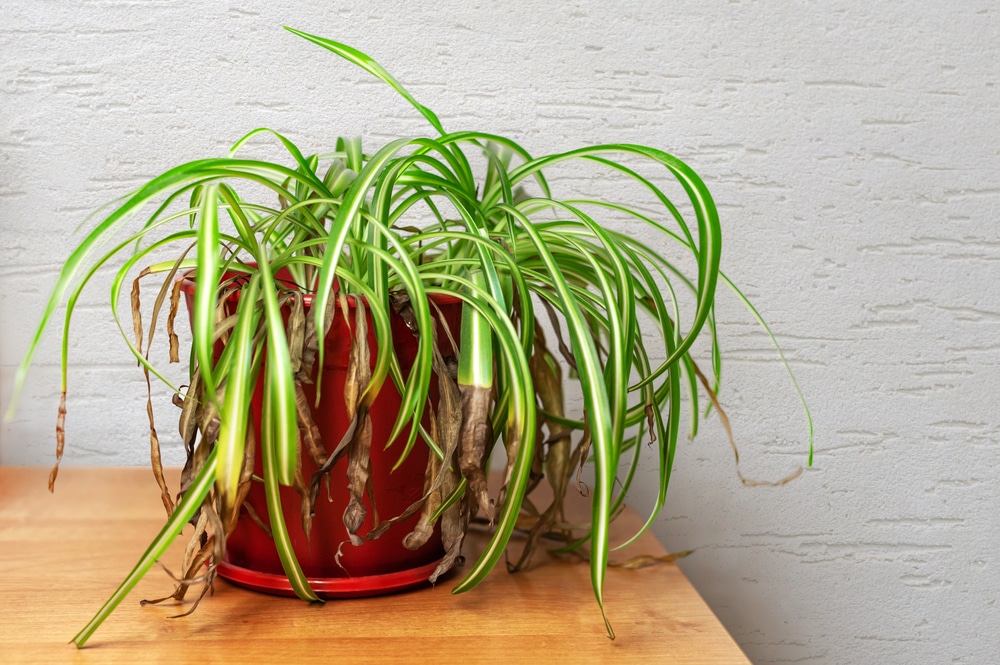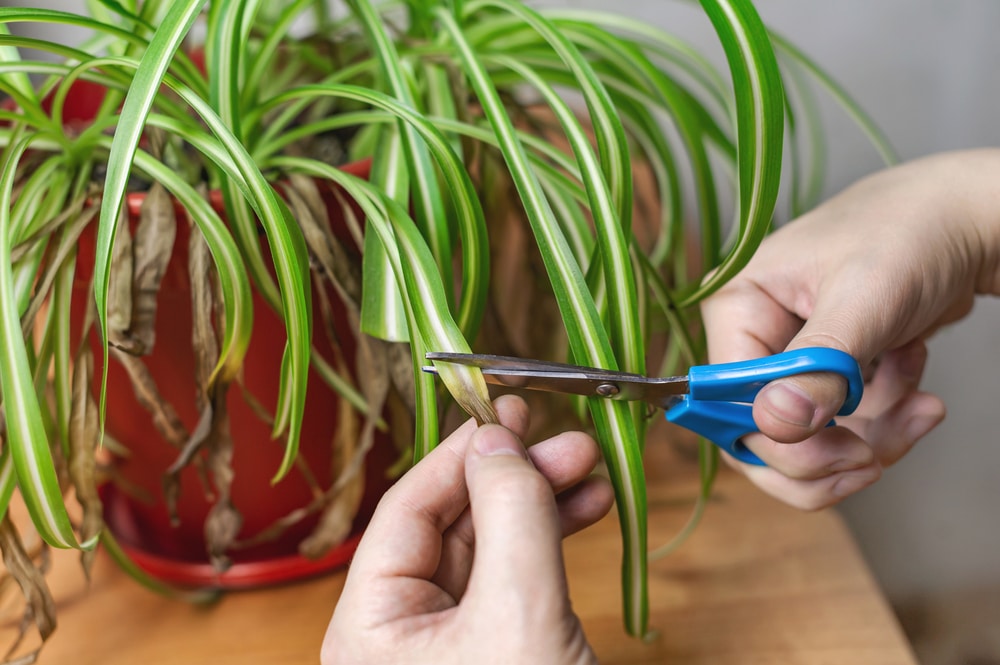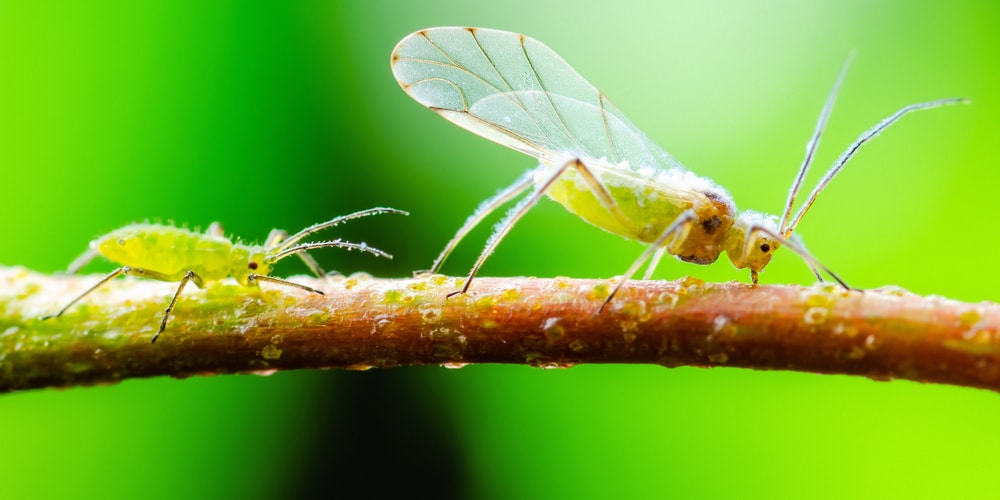If your spider plant’s leaves are turning yellow, don’t panic! This is a common problem for this type of plant and is usually caused by several factors.
This blog post will discuss the possible causes of yellow leaves in spider plants and how to correct the problem.
We will also provide tips on keeping your spider plant healthy and looking its best.
Why Are The Leaves Turning Yellow?
Spider Plants (Chlorophytum comosum) are lovely and simple-to-raise plants. Spider plants, which have delicate foliage, are ideal for less attentive gardeners and newcomers alike. Spider plants can experience yellow leaves, which is a typical problem. The good news is that the source may be quickly identified and corrected if you know what to look for.
What causes yellow leaves on a spider plant? Overwatering, pests or diseases, incorrect lighting, high levels of fluoride or chlorine in the water, and overfertilization can all cause your spider plant’s leaves to become yellow. Your spider plant may decline if its leaves or leaf tips turn yellow.
Spider plants can live for many years and are pretty resilient, but there are certain things you should know about them to keep them healthy and happy. When you discover what those limits are and how to respect them, you’ll realize just how simple it is to maintain your spider plant healthily and joyful. Provide your spider plant with the attention it requires, and enjoy it for years to come!
Causes of Yellow Leaves on Spider Plants
Disease
There are many reasons why spider plants may develop yellow leaves, but one of the most common is disease. Although spider plants are generally resistant to pests and illnesses, they can be susceptible to fungal diseases like powdery mildew and leaf spot.
These diseases often cause the leaves to turn yellow or brown, and they can eventually kill the plant if left untreated. If you suspect your spider plant has a disease, it’s essential to take action immediately.
Remove any affected leaves and dispose of them in the trash. You may also need to treat the plant with a fungicide, following the instructions carefully to avoid harming the plant. With proper treatment, most spider plants will recover from disease and return to their healthy state.
Pests
Pests are among the most common reasons for yellow leaves on spider plants. Spider mites, whiteflies, and mealybugs are all common culprits. These tiny pests suck the sap out of plants, causing the leaves to turn yellow and eventually drop off.
To get rid of pests:
- Start by spraying your plant with water to knock them off.
- Apply insecticidal soap or neem oil to kill them.
- Follow the directions on the product label, as applying too much can damage your plant.
Aphids are another type of pest that can cause yellowing leaves. These tiny insects suck the sap out of plants, causing them to become stunted and yellow.
Humidity And Heat
Humidity is necessary for spider plants to stay healthy, but too much moisture can cause their leaves to turn yellow. This is because the excess water causes the leaves to swell and break down the chlorophyll, giving them their green color. If you think high humidity might be the problem, try moving your plant to a drier location or increasing the ventilation around it.
Heat stress is another common cause of yellow leaves in spider plants. These plants like it warm, but not too hot. If the temperature gets above 85 degrees Fahrenheit, the leaves will turn yellow as the plant tries to conserve water. To prevent this, ensure your spider plant is never in direct sunlight and keep it away from any heat sources such as radiators or fireplaces.
Water Stress
When the spiderplant doesn’t receive enough water, the leaves will begin to turn yellow and eventually brown. This is usually caused by too little water, but it can also be caused by watering with hard water that contains high levels of minerals.
If you suspect your spider plant is suffering from water stress, try increasing the frequency of watering or using filtered water. You should also make sure that the plant is getting enough light. If it’s not, the leaves will turn yellow to increase photosynthesis.
Poor Soil
Poor soil is one of the most common causes of yellow leaves on spider plants. If the soil doesn’t have enough nutrients, the plant will start to turn yellow. This is because the plant isn’t getting the food it needs to grow. There are a few ways to tell if poor soil is the problem.
First, check the soil’s pH level. If it’s too high or too low, that can cause problems for the plant.
Second, make sure that the soil is well-drained. If it’s too wet, the plant roots can start to rot.
Finally, check to see if the soil is too sandy or too clay-like. If it is, that can also cause problems for the plant.
Light
Spider plants get yellow leaves because they are not getting enough light. While spider plants can tolerate relatively low light levels, they will thrive in bright, indirect sunlight. If your spider plant is kept in too dark of a spot, the leaves will begin to turn yellow.
Another common cause of yellow leaves on spider plants is too much direct sunlight. Spider plants prefer bright, indirect light, so if they are placed in a spot that gets direct sunlight, the leaves will start to turn yellow. If you think your spider plant is not getting enough light, try moving it to a brighter spot.
If you think it is getting too much direct sunlight, try moving it to a spot with more indirect light. If you are still having trouble, you can try using grow lights to give your spider plant the extra light it needs.
Conclusion
There are a few reasons why spider plant leaves turn yellow. The most common reason is poor soil, which can also be caused by too much or too little water, pests, humidity, heat stress, or light. To prevent yellow leaves, ensure that your spider plant is in a well-lit spot and that the soil is nutrient-rich and well-drained.
If you think your plant is suffering from a lack of water or light, try increasing the frequency of watering or moving the plant to a brighter spot.
You should also ensure that the plant is not in direct sunlight and that the temperature is not too hot. If you are still having trouble, you can try using grow lights to give your spider plant the extra light it needs.


